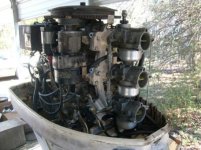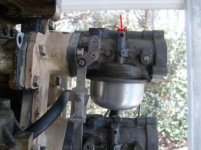DavidW2009
Regular Contributor
I've got a 90 HP Chrysler on a stand. I hadn't run it in about a year.
I tried cranking it and it won't start. No spark.
Pullled the distributor and removed and cleaned the points, which look like new, but had a film or residue on the contacts.
Tried cranking it again. Plenty of spark, and got it going with a shot of starting fluid. It would not start on it's own.
Once running, it started dripping fuel back out of the carbs. About the same for each carb.
Pulled the distributor again and found I had set the point gap too wide. Reset point gap.
I have not tried it since, but with the gap out of spec about .005", could that cause premature firing and back pressure on the carbs? Thus causing the fuel to drip out?
If not, what are the causes of fuel dripping out of all (3) carbs? Carbs have been cleaned, but not rebuilt.
The motor has good compression and sounds strong when revved a bit.
I tried cranking it and it won't start. No spark.
Pullled the distributor and removed and cleaned the points, which look like new, but had a film or residue on the contacts.
Tried cranking it again. Plenty of spark, and got it going with a shot of starting fluid. It would not start on it's own.
Once running, it started dripping fuel back out of the carbs. About the same for each carb.
Pulled the distributor again and found I had set the point gap too wide. Reset point gap.
I have not tried it since, but with the gap out of spec about .005", could that cause premature firing and back pressure on the carbs? Thus causing the fuel to drip out?
If not, what are the causes of fuel dripping out of all (3) carbs? Carbs have been cleaned, but not rebuilt.
The motor has good compression and sounds strong when revved a bit.



